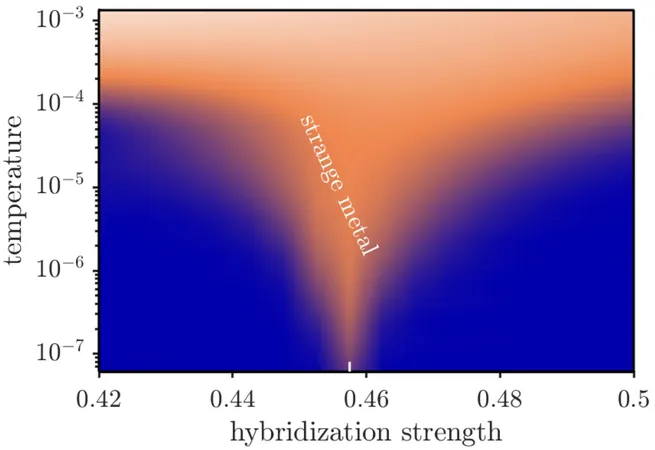
Groundbreaking Study Unveils New Insights into Strange Metal Behavior in Quantum Materials
2025-03-30
Author: Siti
Introduction
In a bold new study, a team of researchers from Ludwig-Maximilian University of Munich, Rutgers University, and Seoul National University has proposed a novel mechanism that may explain the fascinating and perplexing behavior of strange metals — a state of matter that exhibits unique and exotic properties. This research, published in the respected journal *Physical Review Letters*, sheds light on the elusive nature of quantum critical points, particularly the Kondo-breakdown quantum critical point.
Quantum Critical Points
Quantum critical points are crucial thresholds that indicate transitions between different electronic phases in materials at absolute zero temperatures. These points are often associated with remarkable physical phenomena that have puzzled scientists for years. The Kondo effect, a quantum phenomenon where magnetic moments in metals become localized, plays a key role in these transitions.
Research Findings
Utilizing advanced computational methods, the researchers investigated heavy fermion materials—compounds known for their large effective electron masses and rich quantum behavior. Their focus on the Kondo-breakdown quantum critical point led to unexpected discoveries about the dynamics of strange metals, which are often characterized by their indistinct behavior at low temperatures.
Andreas Gleis, the first author, noted, "Our primary goal was to delve into heavy fermion quantum criticality with contemporary computational techniques capable of exploring lower energy dynamics than ever before. The insights we gained regarding strange metal behavior were truly surprising."
New Theoretical Insights
In their work, the team reveals a new theory for understanding the unusual dynamical responses observed in heavy fermion materials near their quantum critical points. They found that certain fluctuations within these materials decay according to a slow Planckian rate when situated in the quantum critical zone. This discovery is pivotal as it directly influences the optical responses exhibited by strange metals, making such properties an intrinsic characteristic of these materials.
Gleis emphasized a significant distinction in their findings: "Unlike the conventional interpretation of strange metal behavior driven by individual electron decay, which is central to the 'marginal Fermi liquid' theory, we discovered that the decay of collective short-ranged current fluctuations governs the optical properties."
Implications of the Research
The implications of their research are profound. They suggest that the Kondo-breakdown quantum critical point is not merely a transient phenomenon but may act as an intrinsic fixed point for strange metals, free from the disorder typically associated with material behavior. Their theoretical predictions align closely with experimental optical conductivity measurements from renowned heavy-fermion compounds, including YbRh2Si2 and CeCoIn5, lending credibility to their hypotheses.
Future Directions
Looking ahead, Gleis and his collaborators are eager to probe deeper into the mechanisms driving these strange metal properties. They aim to determine the precise conditions and interactions necessary for the emergence of strange metals and to explore whether these behaviors manifest in other strongly correlated systems, such as cuprate superconductors — materials that have sparked widespread interest due to their unconventional superconductivity.
Conclusion
The findings from this study not only provide a new understanding of exotic states of matter but also hold potential implications for future technologies, including advanced electronic devices and superconductors that could operate with greater efficiency. The quest to decipher strange metals continues, promising a fascinating journey into the heart of quantum physics.




 Brasil (PT)
Brasil (PT)
 Canada (EN)
Canada (EN)
 Chile (ES)
Chile (ES)
 Česko (CS)
Česko (CS)
 대한민국 (KO)
대한민국 (KO)
 España (ES)
España (ES)
 France (FR)
France (FR)
 Hong Kong (EN)
Hong Kong (EN)
 Italia (IT)
Italia (IT)
 日本 (JA)
日本 (JA)
 Magyarország (HU)
Magyarország (HU)
 Norge (NO)
Norge (NO)
 Polska (PL)
Polska (PL)
 Schweiz (DE)
Schweiz (DE)
 Singapore (EN)
Singapore (EN)
 Sverige (SV)
Sverige (SV)
 Suomi (FI)
Suomi (FI)
 Türkiye (TR)
Türkiye (TR)
 الإمارات العربية المتحدة (AR)
الإمارات العربية المتحدة (AR)